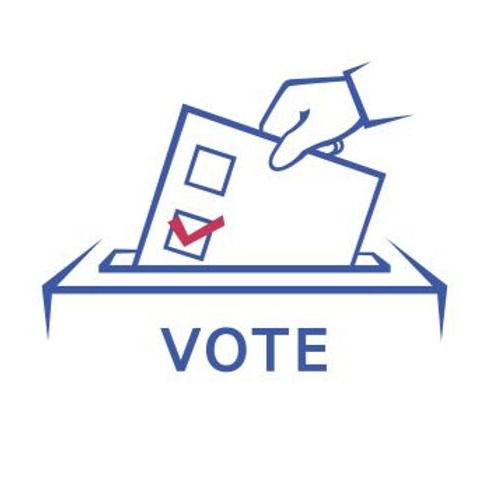Everything You Need to Know About South Dakota Residency
- sdpl8s
- Aug 8, 2023
- 7 min read

South Dakota is a state known for its beautiful landscapes, up-and-coming cities, and changing seasons. Whether you are moving to the state for the first time, or you are an existing resident, there are a few essential things to consider when it comes to residency, driver's licenses, voting, taxes, insurance, and vehicle registration. This article will provide you with all the necessary information you need to know about South Dakota residency and government logistics.
Establishing South Dakota Residency
South Dakota is a state that offers low taxes, affordable living, and an ideal business climate. To enjoy these benefits, you must first establish South Dakota residency. But, what does it mean to establish residency in this state?
Establishing residency in South Dakota means that you have made the state your permanent home. This involves meeting specific requirements that prove you are a resident of the state. Once you have established residency in South Dakota, you will have access to various benefits that the state has to offer.
Requirements for Establishing Residency
Many people assume that having a physical address in South Dakota is enough to establish residency. However, some requirements must be met for you to be considered a resident of the state.
To become a resident, you must be physically present in the state, which involves spending at least 1 night in South Dakota. This requirement ensures that you have a significant presence in the state and are not just visiting temporarily. Proof of residency includes such things as obtaining a South Dakota driver's license, registering to vote, and paying state taxes.
It is essential to note that establishing residency in South Dakota requires more than just having a mailing address in the state. You must meet all the requirements to be considered a resident and enjoy the benefits that come with it.
Steps to Become a South Dakota Resident
To become a resident of South Dakota, start by selecting a permanent place of residence in the state. This could be a home you purchased, a property you are leasing, an apartment, or a room. While selecting a residence, keep in mind that South Dakota has affordable housing options compared to most states.
Once you have selected a place of residence, you will need to establish proof of residency. This involves obtaining a South Dakota driver's license, registering to vote, and paying state taxes. The South Dakota Department of Public Safety (DPS) issues driver's licenses in the state. Therefore, you must surrender your former driver's license to the DPS and complete the necessary application and testing requirements.
Additionally, you should also register to vote and pay South Dakota applicable state taxes. Keep in mind that failing to pay South Dakota state taxes could cause legal problems, which may affect your established residency.
Establishing residency in South Dakota can be a straightforward process if you meet all the requirements. Once you become a resident, you will have access to various benefits that the state has to offer, including low taxes, affordable living, and an ideal business climate.
Obtaining a South Dakota Driver's License

Securing a South Dakota driver's license is the main ingredient to residency. It not only allows you to legally operate a vehicle but also serves as your easily identifiable proof of residency. Here is what you need to know about obtaining a South Dakota driver's license:
Eligibility Requirements
Before you can get behind the wheel, you must meet the eligibility requirements for obtaining a driver's license in South Dakota. To obtain a South Dakota driver's license, you must meet the following requirements:
You must be at least 16 years of age.
You must have a valid Social Security number.
You must present the required identity documents and residency documents.
Required Documentation
Before you can apply for a driver's license, you will need to provide proof of your identity, residency, and lawful presence in the United States. Acceptable documents include a passport, birth certificate, Social Security card, and identification card. You will also need to provide two pieces of mail with your South Dakota address. This could be a utility bill, lease agreement, or a bank statement as proof of residency. It is important to make sure that all of your documents are less than one year old and accurate before submitting them.
Testing and Fees
After you have presented your documents, you will be issued your new South Dakota Driver's License. If you are over the age of 65, a vision test will also be required. If you have never been issued a driver's license before, you will need to pass a written and driving test. The written test covers South Dakota traffic laws, safe driving practices, and road signs. The driving test will assess your ability to operate a vehicle safely and efficiently. You will be charged a license fee, which will vary depending on the type of license you wish to obtain. After paying the fee, and passing the tests (if applicable), you will be issued your South Dakota driver's license.
Renewing Your South Dakota Driver's License
South Dakota driver's licenses are valid for five years and must be renewed before their expiration date to avoid incurring penalties for late renewal. Renewal can be done online once every ten years through the South Dakota Department of Public Safety website. It is important to keep your contact information up-to-date with the Department of Public Safety to ensure that you receive renewal notices in a timely manner.
Overall, obtaining a South Dakota driver's license is a straightforward process that requires careful attention to detail and preparation. By meeting the eligibility requirements, providing the required documentation, passing the tests, and renewing your license when necessary, you can enjoy the freedom and independence that comes with being a licensed driver in South Dakota.
Registering to Vote in South Dakota

Being a registered voter is a significant responsibility for South Dakota residents. It enables you to have a say in public policy decisions that impact your community and the state as a whole. By registering to vote, you can exercise your right to vote and make your voice heard. Below is a comprehensive guide on how to register to vote in South Dakota:
Voter Eligibility
To be eligible to vote in the state of South Dakota, you must fulfill certain requirements. Firstly, you must be a US citizen. Secondly, you must be at least 18 years old on election day. Thirdly, you must have a South Dakota driver's license or identification card. Lastly, you must be a resident of South Dakota. If you meet all of these requirements, you are eligible to register to vote in South Dakota.
Voter Registration Process
The voter registration process in South Dakota is simple and straightforward. To register to vote, you can visit your county auditor's office. You can also visit the South Dakota Secretary of State website to complete the registration process online. If you prefer a paper registration form, you can obtain one from public libraries, post offices, and other government organizations. When filling out the registration form, be sure to provide accurate and up-to-date information. This will ensure that your voter registration is processed smoothly and efficiently.
Absentee Voting and Early Voting
If you're unable to vote on election day, you can cast your ballot early in South Dakota, or vote absentee. Absentee voting is an option if you cannot make it to the polls on election day. This is particularly useful for people who are traveling, in the military, or have a disability. To vote absentee, you must request an absentee ballot from your county auditor's office. Early voting is where registered voters can cast their ballots ahead of time. It usually takes place within a few weeks of the election. Early voting locations are usually shown on the South Dakota Secretary of State website or in local newspapers.
Election Day Information
On election day, South Dakota polling stations operate from 7 am to 7 pm. However, if you are in line to vote at 7 pm, you will still be allowed to cast your vote. Polling locations are usually shown on the South Dakota Secretary of State website or in local newspapers. It's important to note that voters should bring a photo ID, such as a driver's license, passport, or a South Dakota ID card. This is to ensure that only eligible voters are allowed to cast their vote.
In conclusion, registering to vote in South Dakota is a straightforward process that enables you to exercise your right to vote and make your voice heard. By following the steps outlined in this guide, you can become a registered voter and participate in the democratic process. Remember, every vote counts, so make sure to cast your ballot on election day!
Understanding South Dakota Taxes

South Dakota is known for its business-friendly tax environment but taxes are still an essential consideration. Being a resident, it's important to understand the different types of taxes you may be required to pay as a resident of the state. These types of taxes include:
Income Tax
South Dakota does not have state income tax. Therefore, residents and non-residents do not pay income tax at the state level. This makes the state an attractive place to live and work compared to other states in the US.
Sales Tax
South Dakota applies a 4.2% state sales tax, and some areas impose additional taxes to local sales taxes. Sales taxes in South Dakota do not cover groceries and most goods needed for basic living, such as clothing, medications, and food. However, prepared foods, motel/hotel rooms, and alcoholic beverages are subject to sales tax.
Property Tax
Property taxes in South Dakota are relatively low compared to other US states. Property taxes are assessed by local municipalities and are based on the value of the land and the property being assessed. Residents of South Dakota can qualify for property tax freezes, depending on their income, age, and disability status.
Tax Benefits for South Dakota Residents
South Dakota offers several tax benefits to its residents. Some of these tax benefits include no inheritance or estate tax, no personal property tax, and tax exemption for senior citizens.
Vehicle Registration and Insurance in South Dakota

Vehicle registration and insurance are essential requirements for South Dakota residents who wish to own and operate a vehicle in the state. Here are a few things to consider:
Vehicle Registration
When you first establish residency in South Dakota, you will also need to obtain your South Dakota license plates. There will also be a registration fee you must pay. South Dakota requires that residents register their vehicles within 90 days of moving into the state. Smog checks, safety inspections or proof of insurance are not required at the time of registration.
Vehicle Insurance
South Dakota requires all drivers to have valid liability insurance. Liability insurance is mandatory in South Dakota, and it covers damages you cause to someone else's vehicle or property when involved in an accident. You may also choose to add other coverage options, such as collision, comprehensive, and personal injury protection (PIP).
Conclusion
Living in South Dakota offers residents several advantages, from low taxes to an ideal business climate. As a resident, it is essential to familiarize yourself with South Dakota residency requirements, licensing, voting, taxes, and vehicle registration and insurance. Knowing your rights and responsibilities will help you settle into your new community and enjoy all the benefits that South Dakota has to offer.



Comments